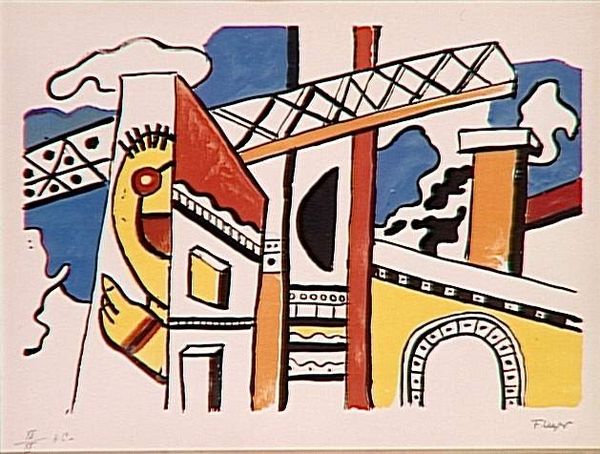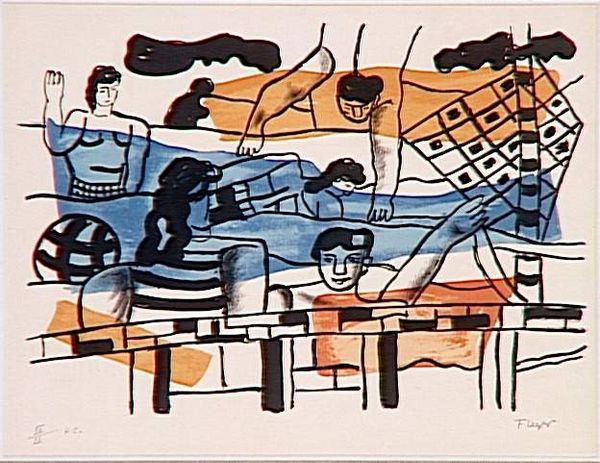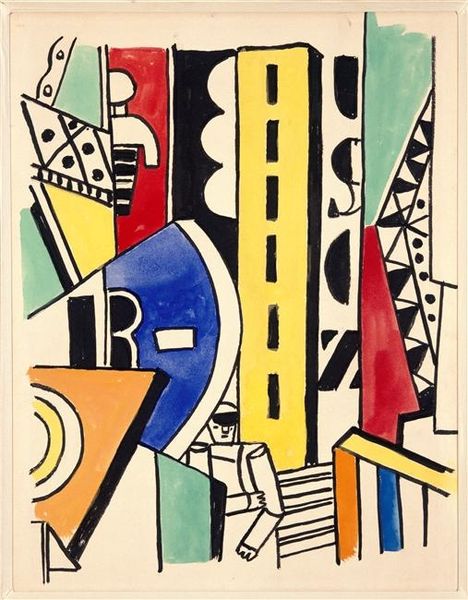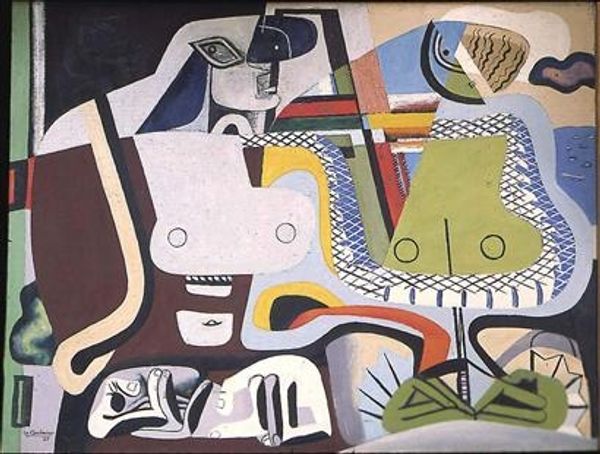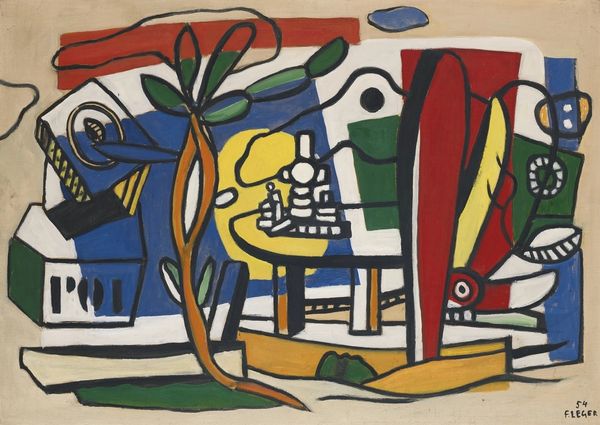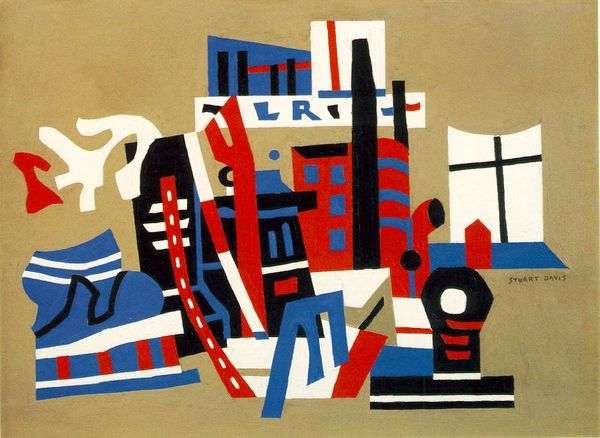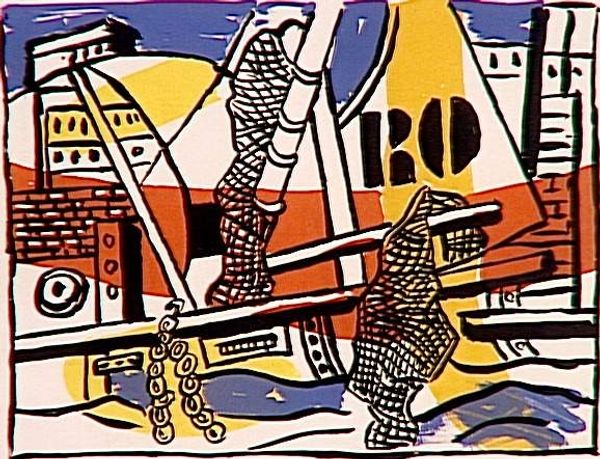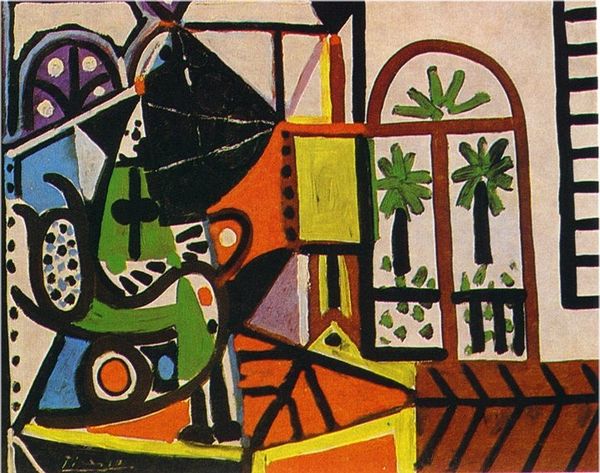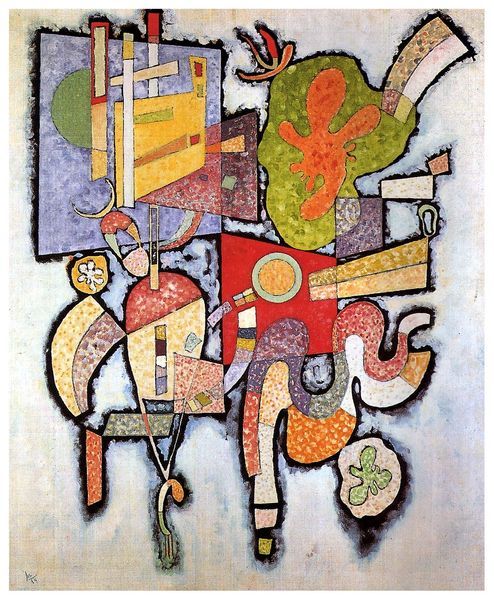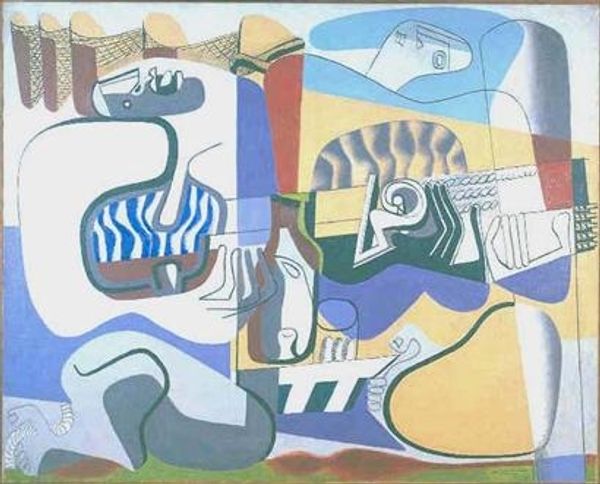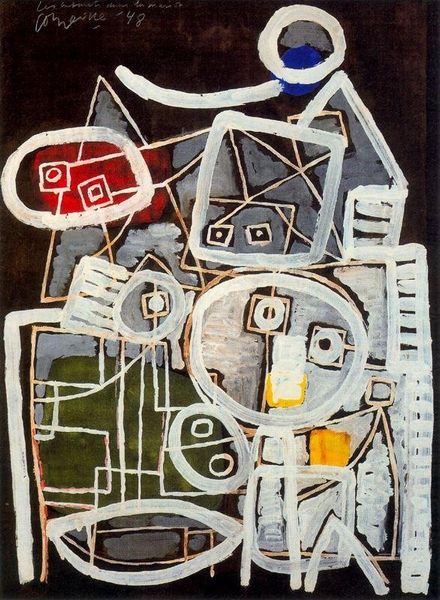
painting
#
cubism
#
painting
#
geometric
#
cityscape
#
modernism
Copyright: Fernand Leger,Fair Use
Curator: Here we have Fernand Léger’s painting "Fuel Pump," housed right here at the Musée National Fernand Léger. It encapsulates his distinct style, doesn’t it? Editor: It does. At first glance, it strikes me as a strangely cheerful scene, despite its mechanical subject matter. The bright, almost playful colors…it feels deceptively optimistic. Curator: Léger was deeply interested in the burgeoning industrial landscape and its effects on society. Remember, he lived through both World Wars. To understand "Fuel Pump," consider its historical backdrop: the rise of automobile culture, and its symbolism representing modernity and a rapidly changing world. Editor: So, these geometric shapes…the fuel pumps themselves, rendered almost like abstract totems, become symbolic markers of that shift? Reminds me a bit of ancient boundary markers now replaced by standardized forms. I see something undeniably futuristic in this, a mechanical god maybe? Curator: That’s insightful. Léger wasn’t just documenting machines, but exploring their presence in the collective consciousness. Consider the era; mass production and technological advancements reshaped societal structure, blurring the lines between nature and industry, a constant push to reconsider what it meant to be human in that context. Editor: I am fascinated by these fragmented letters, the words 'VOR' and 'SHI'. It brings into question the language of industrialization and communication. The text adds this layer of cultural encoding. What do those codes suggest? Are they a guide? Warning? Advertising? Curator: Exactly, these isolated fragments provoke thought. It prompts one to decode messages ingrained within technological progress itself. He was making it very clear: the landscape was in communication and was itself its own symbol. Editor: It leaves me pondering: What "future" were Léger and his contemporaries envisioning, and what pieces of that imagined future are we now actively dismantling or recreating? Curator: An excellent question to ponder! The artwork forces us to consider the trajectory of progress and our role in shaping it.
Comments
No comments
Be the first to comment and join the conversation on the ultimate creative platform.
